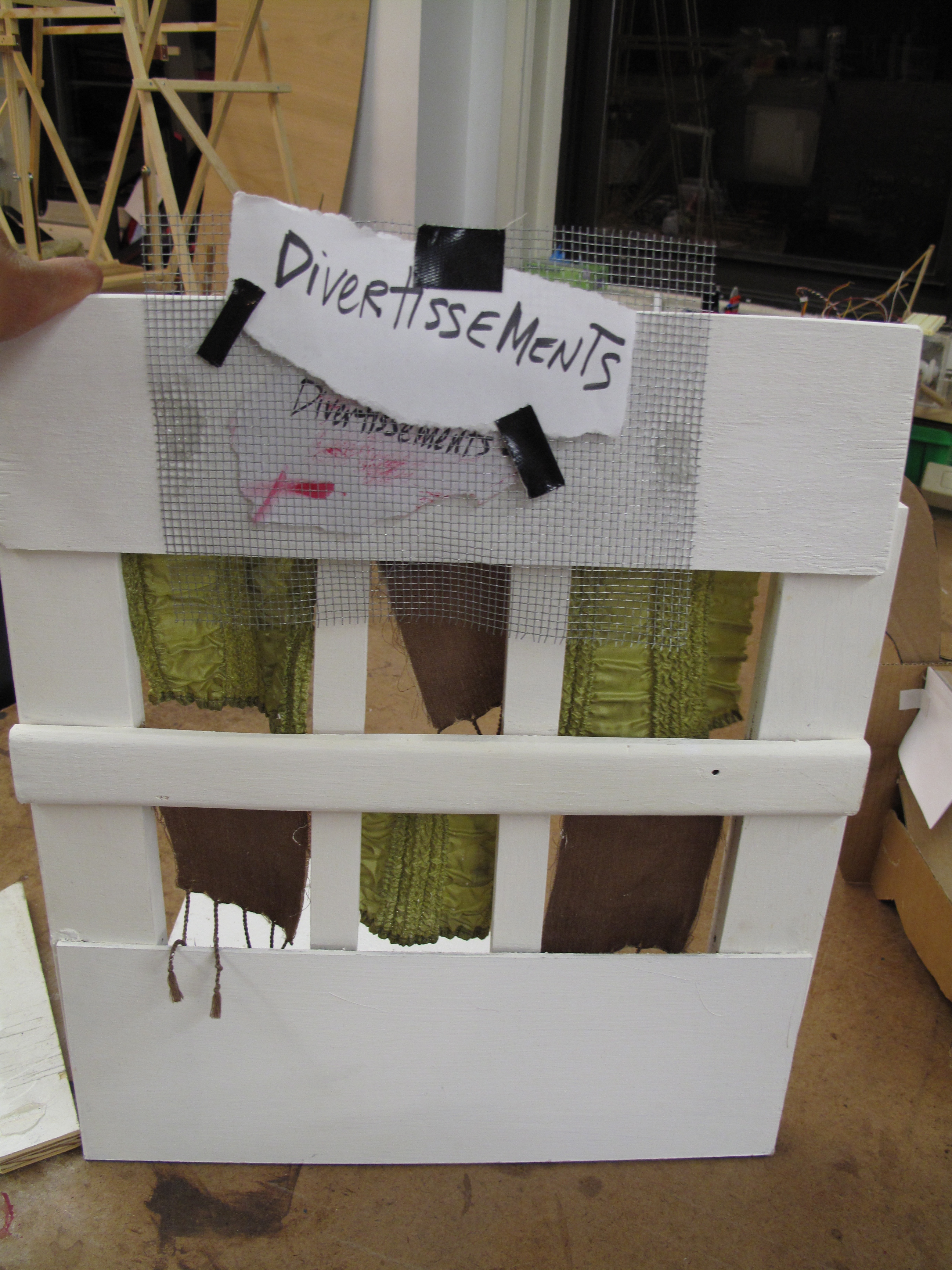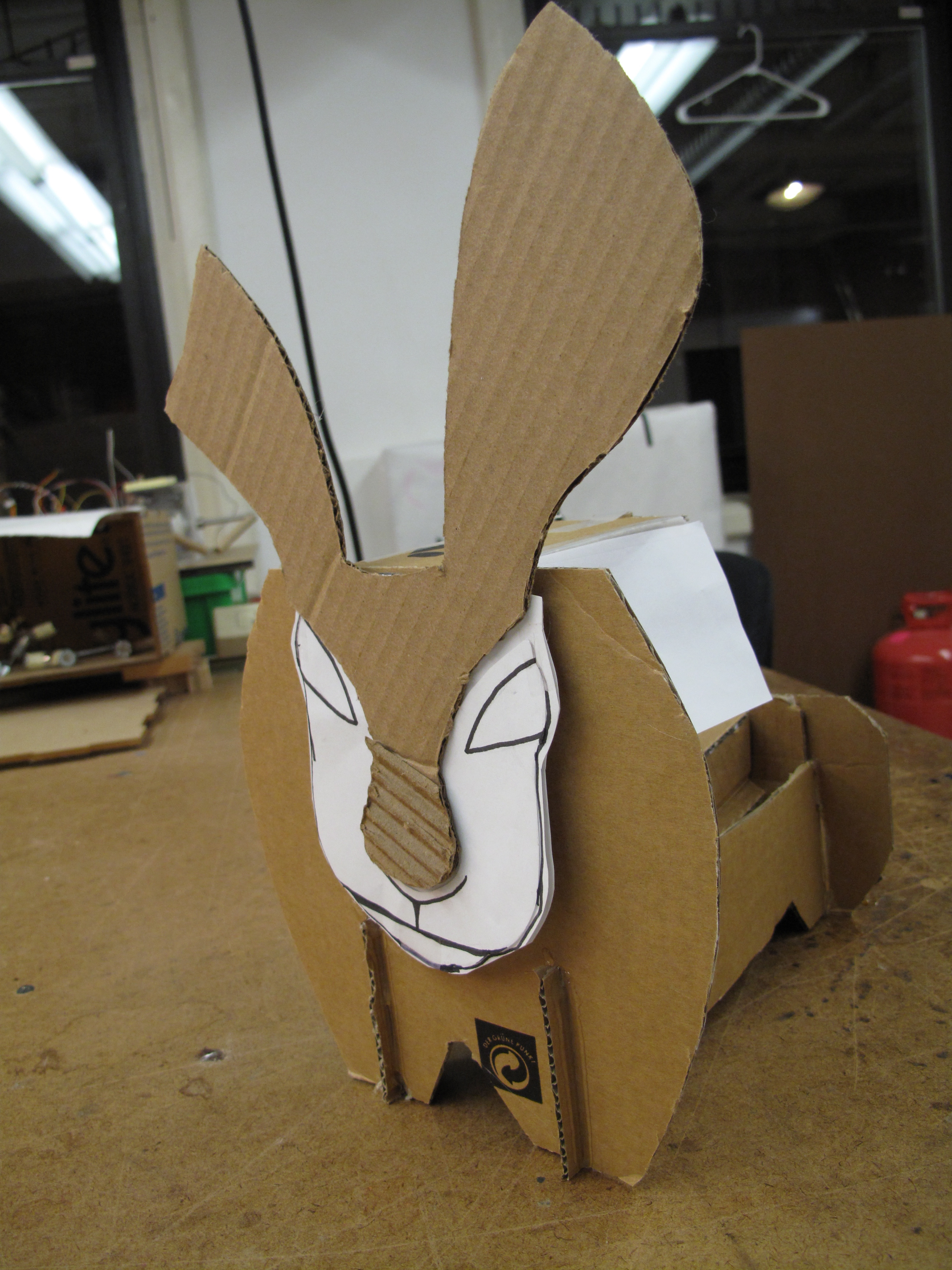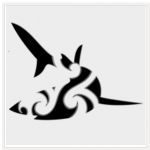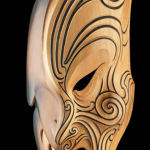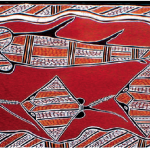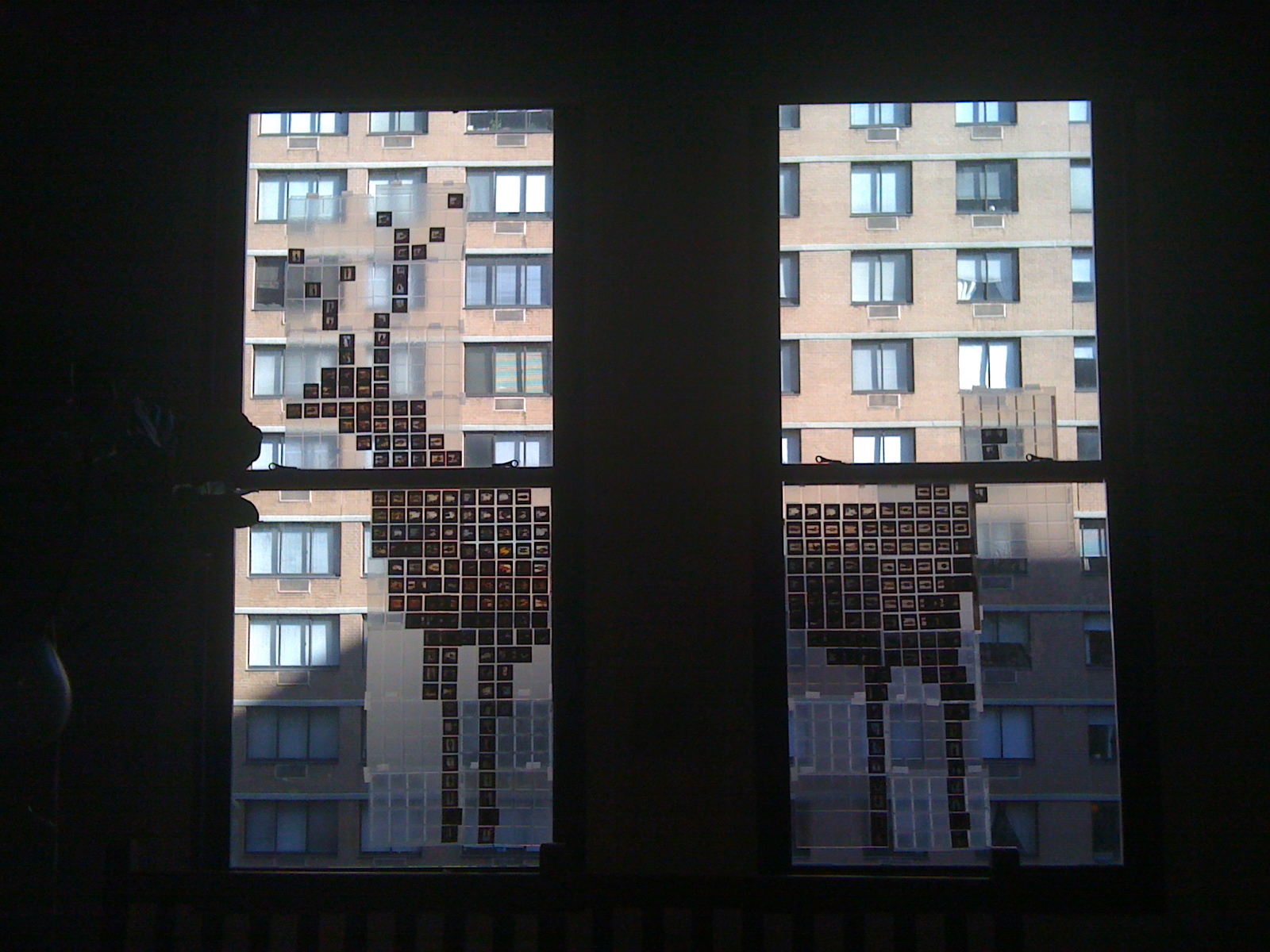After I did my additional research, I brainstormed some drawings again and finally had an idea. I decided to make a model of a hare that fit over a large flat-screen plasma television/monitor, in which several pieces of the hare had been removed through which you would watch small videos related to hare mythology and stigmas related to women, as previously mentioned. The removed pieces would look like raw flesh and would be pierced with knives, forks and spoons.
This piece plays on the idea of the hare as a mythological animal, as seen in its leaping position that has been commonly used throughout history in various implementations, such as coins, paintings, sculpture, and jewelry. At the same time, the overall form I’ve created also represents raw flesh and is meant to relate to the hare’s long history as a prey animal and food source. The round background that the hare is mounted on relates to the moon, to which hares are overwhelmingly associated in myths around the world.
The videos I’m using come from Archive.org. Most are from the Prelinger Archives except for a few, such as the Bugs Bunny cartoons. The large majority of them are dated from 1940-1960, though the range of dates comes from circa 1900-2000. When I started thinking about how I was going to relate the myths and history of the hare, I realized I needed to select videos that were more versatile than just stag and burlesque films. Thus, the film clips I chose range in subject matter from: burlesque and more explicit stag films, Bugs Bunny episodes, children’s nutrition, egg painting, male and female reproduction, censored pornography magazines, to clips about affection and love. To select my clips, I surveyed a lot of films. In some, I used just one or two clips but I still had to download them, import them into Final Cut Pro, and edit them. Out of 60 videos, I made 6 QuickTime files lasting about 6 minutes each. (I also made a 7th film that would only be used in the background which, at the time of this writing, I’m not sure if I’ll use yet.)
To project these videos, I used a free program called Video Projection Tools, v. 4.1. It was made in Max/MSP and it allowed me to rotate the video player window to fit my window cutouts. Since I’m running 6-7 .mov files, the computer I need to use has to be relatively fast and has to have Max/MSP installed.
I put all of my construction photos on Flickr and there are descriptions for each picture, so at the moment I won’t go into all that much description because construction was very involved. In phase 1 of my project, I tried to incorporate more Living Art ideas into the moon and I used some cellophane and some type of mesh material that I thought would nice in the light. In the end, it looked really busy and I thought it took away from the body of the hare. I also found that when people put the flesh chunks back into the hare, the put them in too far; I needed a barrier. I also didn’t go too explicit in my videos because I just wanted to make the connection, not to get to erotic.
In the next iteration, I took off the cellophane and mesh and remade the background to make the moon connection much stronger. It’s a much more attractive background. I also added another layer between the hare and the monitor, which also acts a barrier for the flesh chunks and makes the removal of the chunks a more visceral feeling. After all this, I also added a plate, which looks like someone’s just been served chunks of meat. The plate and the body of the hare are both really disgusting, but the moon helps make it look quite beautiful.
I’m very happy to have updated the look of the piece because the new looks seems to connect my ideas much better. In addition, I also made the videos more explicit and some are now a little bit longer, which I changed because I wanted to try and push the level of comfort with my pieces. When I did the video editing, I started to become both desensitized to the nude bodies and also disgusted with what seemed like exploitation of women. Making the flesh chunks as disgusting as possible felt a bit like retribution.
This was a fun project. It was a lot of work, but I’m happy with how it turned out. In the end, I felt like I had really achieved what I’d hoped – something revered yet reviled, much like hares and women.
